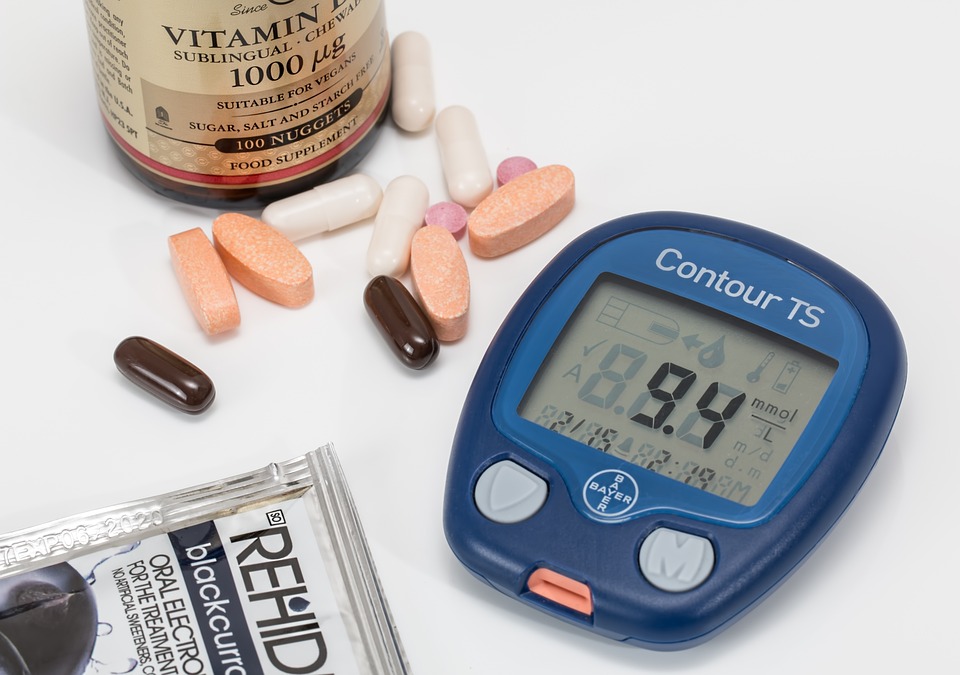When you are diagnosed with diabetes, you may feel overwhelmed and not know where to start in terms of managing the condition. It is important to work with your healthcare team to develop a plan that works for you in order to keep your blood sugar levels under control. If people do not take control of their diabetes, they may experience health complications, including heart, eye, and kidney problems, hospitalization, and even the loss of a foot or leg.
Newer medications, insulins, and devices make controlling your diabetes easier.
Even if you do everything right, you can still have some fluctuations in your blood sugar. Knowing how to control diabetes is a life-long journey. Your blood sugar levels will not always be perfect, but you can still work with your healthcare team to maintain a healthy lifestyle and avoid complications.
Different types of diabetes
There are three main types of diabetes: type 1, type 2, and gestational diabetes. Type 1 and 2 are the most common, while gestational diabetes only happens during pregnancy.
The first step to managing diabetes is understanding which type you have and if there are any other health conditions that could complicate your care plan. The prescribed course of action for managing diabetes may differ depending on the type, but all treatments aim to maintain blood sugar levels by regulating diet, medication, and physical activity.
Type 1 diabetes
Type 1 diabetes is most often diagnosed in children, but it can occur at any age. In type 1 diabetes, the body destroys insulin-producing beta cells in the pancreas due to an autoimmune condition. Without insulin, glucose in the bloodstream skyrockets and causes symptoms such as:
- Excessive thirst and urination
- Lethargy
- Nausea and vomiting
- Rapid breathing
Controlling type 1 diabetes requires taking insulin through daily injections or an insulin pump, as those with type 1 diabetes no longer make insulin and are dependent on it for survival. Treatment for type 1 diabetes involves taking insulin regularly and checking blood sugar levels often to treat high and low glucose levels. You can help your healthcare provider give you the right insulin dose by keeping track of the carbohydrates you eat and how active you are.
Type 2 diabetes
Type 2 diabetes is when your body can’t make or use insulin well. Lifestyle choices like being overweight and not being active can lead to insulin resistance, while other things such as age or genetics may make the pancreas not produce insulin as much, making blood sugar go up.
The symptoms of type 2 diabetes can develop slowly, often over the course of several years. This may include:
- Lethargy
- Blurred vision
- Dry, itchy skin
- Frequent thirst and urination
- Sores that do not heal
You can control type 2 diabetes by making small changes to your daily routine. This will help to improve your symptoms and reduce your risk of developing complications.
The treatment for type 2 diabetes is controlling glucose levels by eating healthy and exercising. The treatment may involve taking oral and injectable medications and/or insulin. Some people are able to improve their diet and lifestyle to the point where they no longer need to take medication to lower their blood sugar.
Gestational diabetes
Gestational diabetes is a type of diabetes that can develop during pregnancy. It happens because pregnancy can cause hormone changes, which can affect the body’s ability to use or make insulin. Preeclampsia is most commonly diagnosed during the second half of pregnancy. However, women who have risk factors are usually screened earlier on in their pregnancy.
It’s important to know how to manage diabetes during pregnancy in order to decrease the likelihood of complications for both the mother and the child. If a woman has diabetes while she is pregnant, an endocrinologist or certified diabetes educator will need to monitor the baby closely. They will provide the mother with a specific treatment plan to maintain tight blood sugar control. The healthcare professional will continue to monitor the mother’s blood sugar levels after the baby is born and over the next few years in order to check if the levels are in a healthy range and to determine if further treatments are needed.
Diabetes due to other causes
Other causes may include diabetes. This can also be caused by rare forms of genetic mutations that only affect a single gene. Another cause can be diseases or chemicals that have an effect on the pancreas, such as pancreatitis, cystic fibrosis, or treatments with glucocorticoid medications.
The NIDDK states that genetic testing can help to diagnose certain forms of monogenic diabetes, such as neonatal diabetes mellitus (NDM) or maturity-onset diabetes of the young (MODY), after an initial diagnosis of diabetes has been made. Several different treatment options are available for MODY and NDM, including oral or injectable medications, as well as making changes to diet and physical activity for some people with MODY.
Why controlling diabetes is important
It is important to take care of yourself and your blood sugar levels for good health and well-being, whether you have diabetes or not. If your blood sugar is well-regulated, you can decrease your likelihood of developing complications and in the case of gestational diabetes, prevent complications for both you and your child.
Controlling type 1 or type 2 diabetes can lead to short-term and long-term benefits, including:
- Feeling good with a high level of energy.
- Being able to enjoy work or school and perform as expected.
- Decreased incidence of diabetes complications.
- Financial savings of costs for extra doctor’s office visits, lab tests, or hospitalizations.
- Decreased need for additional medications or medical treatments.
Controlling gestational diabetes can lead to short-term and long-term benefits, including:
- Better health for the baby, including healthy birth weight.
- Preventing low blood sugars in the baby after birth.
- A normal delivery without complications.
- Helping to prevent type 2 diabetes in the baby later in life.
- Better health for mom.
Learning how to control diabetes can help you experience fewer complications, such as:
- Missed school or work days due to illness.
- Frequent hospitalizations.
- Diabetic eye disease requiring surgery or laser treatment.
- Diabetic neuropathy which can include pain in the feet and hands.
- Kidney disease leading to the need for dialysis.
If you’re willing to put in the time and effort, you can improve your quality of life by learning to manage your diabetes. To work towards healthy blood sugar levels, start with small changes in your daily routine. This will help you to develop healthier lifestyle choices. If you are feeling overwhelmed by the task of managing your diabetes, set up a meeting with a certified diabetes educator. They can help you develop a plan to balance your responsibilities and the time needed to take care of your health.
Additional Nutrients To Protect Against The System-wide Damage Inflicted By Surplus Glucose
Chromium: The Master Blood Sugar Regulator
Research on chromium has continually shown that it can improve blood sugar levels, increase insulin sensitivity, and improve lipid profiles. A more recent study shows that chromium has a positive effect on the way cells communicate with each other, which lowers blood sugar levels.
Each cell in your body has an internal communications system that must be working properly to ensure optimal blood glucose absorption and metabolism. Cells need to be able to detect and respond to high glucose levels in the blood in order to function properly.
As soon as cells detect an increase in sugar levels, a number of biochemical processes are set in motion to determine how well the cells can cope with the increased sugar load. Chromium helps the body process blood sugar, which lowers glucose levels in the blood.
Chromium has been shown to be effective in lowering blood sugar levels and increasing insulin sensitivity in clinical studies.
According to a 2009 study, diabetic patients who were given chromium had reductions in their total insulin requirements, as well as reductions in their fasting and afternoon glucose levels. According to recent studies, overweight to obese diabetic patients can improve glycemic control by taking chromium and biotin supplements along with their regular medication.
Chromium only helps to regulate blood sugar levels when they become too high rather than causing them to become dangerously low like some drugs can.
After a meal, scientists believe that it is more important to control blood sugar than at any other time. The interval between meals is when blood sugar levels can rise sharply in the body, causing long-term damage to various organs. Chromium has been shown to reduce the amount of glucose in the blood after eating in most subjects.
Chromium’s actions target multiple areas to not only keep sugar levels low but also to prevent the formation of advanced glycation end products (AGEs). Chromium is most notably effective in reducing levels of hemoglobin A1c, which is an advanced glycation end product associated with long-term exposure to high sugar concentrations.
Chromium and biotin have many benefits, including reducing abnormal lipid levels and increasing artery-cleansing high-density lipoprotein (HDL) in the blood. The combination of these two has also been shown to favorably affect a biomarker called the atherogenic index: the ratio of triglycerides to HDL that is associated with increased cardiovascular risk.
Chromium has been shown to improve insulin signaling, which is also associated with decreased production of specific pro-inflammatory cytokines. These cell-signaling molecules work together to make bad glucose control last longer and get worse.
Cinnamon: A Clinically Documented Glucose Fighter
Cinnamon has been traditionally used to help with obesity and conditions such as diabetes and metabolic syndrome. The polyphenols in water-soluble cinnamon extracts have multiple benefits, including enhancing insulin sensitivity, lower blood sugar, and limiting damage by advanced glycation end products. The collective effects of these habits contribute to a reduction in the risks of developing metabolic syndrome.
The polyphenols in cinnamon are powerful antioxidants that can protect cells and tissues. We have learned in recent years that cinnamon also increases the number and activity of the glucose transport complexes that enable cells to take up glucose when insulin is present.
Cinnamon increases the production of PPARs, which are being studied as possible treatments for diabetes. Yet another way that cells are able to tell when there is an increase in glucose levels and take action to lower them. Increased PPAR activity contributes to improved insulin sensitivity.
Cinnamon supplements can help lower blood sugar levels and improve insulin sensitivity in humans, according to studies. It makes the spike in glucose levels following ingestion of a sugar-rich meal less severe and, at the same time, lowers insulin spikes.
Cinnamon can help to make you feel fuller so that you don’t eat more than you should.
Studies have shown that cinnamon can help lower blood pressure, which in turn can help reduce the effects of metabolic syndrome. The benefits of reduced blood sugar reduced blood pressure, and improved body composition for adults with early metabolic syndrome but without signs of diabetes are tremendous.
These effects decrease the amount of glucose in the body. Cinnamon also helps to prevent damage to tissues caused by glucose by reducing the amount of protein glycation and preventing the harmful effects of AGEs. Studies have shown that cinnamon supplements may help reduce diabetic neuropathy, which is a painful and debilitating nerve injury that is caused by the glycation of neural proteins. Cinnamon’s polyphenols have a variety of benefits that contribute to reducing our overall disease risk, including reducing inflammation, killing microbes, and preventing tumors. They also help to lower cholesterol levels and improve our immune system function. Cinnamon extracts specifically reduce the levels of inflammatory cytokines that come from fat tissue and increase the risk of cardiovascular disease.
Summary
Having diabetes means you need to take extra care of your health by partnering with a healthcare team, learning how to manage your blood sugar, and making lifestyle changes or using technology to help you maintain stable blood sugar levels. Although it may be daunting to establish a diabetes management routine, it will eventually become second nature. If you take care of your diabetes, you will feel better and be less likely to have complications. Just remember that you have the power to control your diabetes; it does not have to control you.







